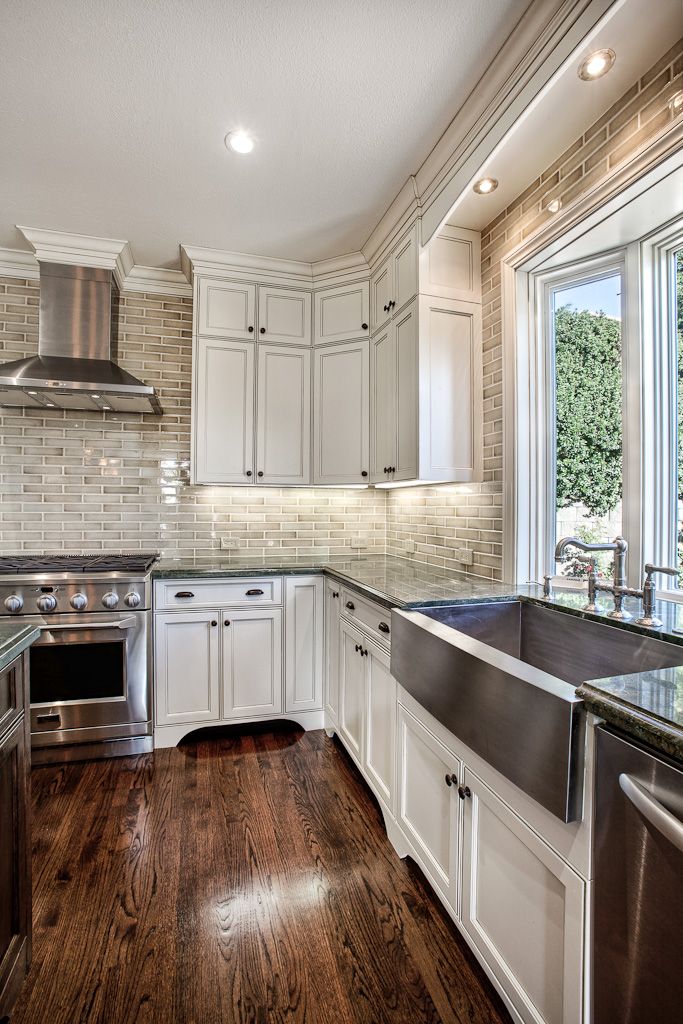
“We are doing some work to our kitchen, and one thing I keep seeing in magazines is hardwood floors in the kitchen. I love the look & want to incorporate it into my own home, is this a good idea?”
Choosing hardwood floors in the kitchen is a great option. There are definitely some cons, but there are many pluses as well. It’s a look that is very on trend right now. Hardwood flooring in the kitchen is especially great for an open concept home because there is no transition between the flooring, the seamless look is continuous.

There are certain types of wood species that really thrive in a kitchen setting, and there are others that are less ideal. Exotic woods such as teak and rosewood are not great options as they are a softer species and dent easier. You want a ‘harder’ wood, if this is the route you’re going in your home.
Our recommendations would be to choose hardwood species offering a tighter grain. Oak (see the image just below to the left) for example features a prominent grain pattern that hides dirt and dents better than woods with subtle grains. Try to stay away from pine and birch and light colored flooring because the kitchen is such a high traffic area. These lighter tones will not hide dirt, scuffs and scratches as well as other species.

The most ideal type of woods to use in your kitchen are reclaimed wood (see the image to the right) , or a distressed finish, or hand scraped hardwood. Distressed and hand scraped will ease the mind of someone who is very particular about any scuffs. Let’s be realistic, at some point, something is going to get dropped on your floors, especially in the kitchen. With this type of finishing, any dents or damage will look planned, or if nothing else, add some extra character. Hand scraped is a beautiful look even in a modern/contemporary home. It does sound rustic, but it can be very subtle to the touch.

In terms of finish, I wouldn’t recommend a glossy look. The shine is going to be much more obvious if it is dirty and
scuffed and over time, it will begin to look worn and tired. Finishes come in a range of sheens from low-shine satin to high-gloss. Satin sheen is the best option because it will hide food bits and dust best.

Moisture is always a concern when you use hardwood in the kitchen. If possible, use a mat or rug in front of areas that often get wet, and be sure to wipe all spills as soon as possible. Be mindful when adding hardwood to your kitchen that it does require a regular maintenance routine. Follow the flooring manufacturer’s cleaning guidelines.



